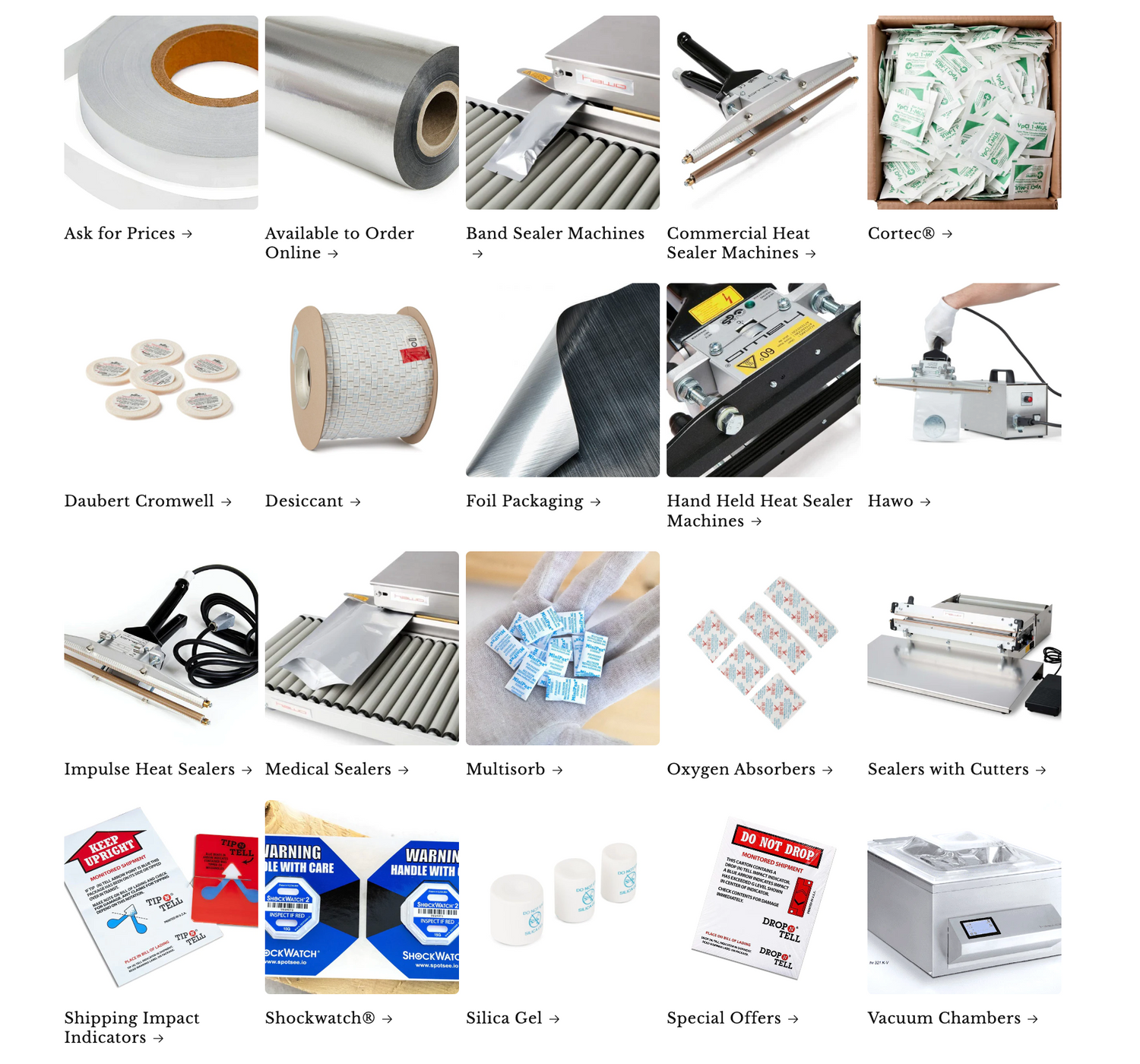MIL PRF 131 K Class Aluminium Foil VAL59HS High Strength Military Packaging Rolls + Valcross®
MIL PRF 131 K Class Aluminium Foil VAL59HS High Strength Military Packaging Rolls + Valcross®
50 in stock
Couldn't load pickup availability
Share this product
This Military Packaging is an aluminium foil & PE construction with the addition of a high strength Valcross® membrane layer.
With the addition of Valcross® these flexible barrier materials feature an enhanced tear and puncture resistance as well as excellent moisture barrier properties.
VAL59HS™ is an ideal choice for large or awkwardly sized objects, particularly those with sharp edges.
Conforms with DEF STAN 81-147 (formerly DEF STAN 81-75) & MIL-PRF-131 K Class 1.
We hold pre cut 1.0mtr, 1.25mtr & 1.50 mtr rolls in stock. Standard lengths are 200 linear mtr but a custom slit and rewind service is available.
The tough construction of this MIL PRF 131 K Class 1 aluminium foil make it the ideal choice for demanding export and asset preservation/storage projects.
The combination of complementary materials in this mil spec packaging result in an effective moisture barrier that protects goods during transport and storage.
The tear and breaking strength is the highest in our range. Still it retains the very low moisture vapour transmission rate of 0.3g/m2 per 24 hours. This is one of a list of impressive characteristics seen on the data sheet of this material.
The high performance nature of this extends to the inclusion of Valcross® in the laminate. This gives optimal strength whilst retaining excellent flexibility.
This barrier foil is available in several different widths supplied in a 200mtr log packaging roll. The user can cut to the desired dimensions allowing the component to be heat sealed and vacuum packed for for it’s journey.
Using MIL-PRF-131 K Spec Bags
This type of Aluminium foil can be converted into liners flat bags & pouch packaging to suit components and precision parts.
It is ideal for use in heavy machinery transport/storage projects. It also meets the standard EU and BIR guidelines as well as MIL PRF 131 K class 1.
- NF H 00 310 CLASS IV approved.
- DEF STAN 81-75/2 – TYPE 1 CLASS A approved.
MIL PRF 131 K Class 1 Handling
Requires Heat sealing with a compound aluminium foil sealer. Set to 210°c at 5 bars for 2-3 seconds.
The suitable operating temperatures for this material are between -40°C to +70°C.
For optimal conditions we recommend you use this barrier foil in conjunction with desiccant. This will absorb excess moisture in transit.
For more information on how to calculate desiccant requirements please visit our desiccant estimate page.
Warning – Please note this material is intended to be used only by suitably trained professionals.
The Mil PRF 131 K performance specifications is specified by the US government to apply to barrier materials that are:
- Water vapour proof
- Grease proof
- Flexible
- Heat Seal able
These military specification barrier materials must feature the above characteristics to be suitable for use as military packaging.
Technical Data
Constructed of micron 12чm PET, 9чm Alu, 70gsm Blue Crossed Polyethylene Valcross® Material code VAL59HS.
Delivery Time
Dependent on quantities and format ordered. Log & jumbo foil rolls available from stock.
Product Specifications
|
What is Mil - PRF - 131 Class 1? As of to date (April 2022), the standard/specification has transitioned to Class 1 Mil - PRF - 131L. While retaining all qualifications of Class 1 Mil - PRF - 131K, the US QPD Naval Labs updated the standard to reflect the exclusion of Class 2 materials. These versatile materials lend themselves to tailored barrier bag solutions, perfectly conforming to your product specifications with efficiency. Whether in need of customised bags or rolls for smaller tasks, our offerings are adaptable. The inclusion of a Polyethylene inner layer enables easy sealing using handheld heat sealers, particularly those equipped with straight bar sealers delivering heat evenly (bottom to top). This facilitates the conversion of the material into modified Barrier bags with vapour protection against corrosion, including compliance with the Mil DTL-117 requirement. Mil - PRF – 131 Performance Specification The rigorous testing regimen mandated for Mil - PRF - 131 resources to attain registration with the US QPD Naval Labs ensures their reliability. All testing parameters must precisely match those of the final product, guaranteeing no unauthorised alterations that could jeopardise product integrity. Any deviation from the experimented material may lead to rejection and removal from the QPD. Testing procedures are conducted in an environment with 50 relative humidity ± 5% and a 73 ± 3 ℉ temperature. For Mil - PRF - 131 supplies to meet military specifications, they must successfully navigate stringent tests, including:
Not measurement precision
Performance specification Requirements- Qualification
Rolls must be 36 inches wide, with a tolerance between 1/4 and 1/8 inch, except if specified differently. The minimum length of roll components must be at least 200 yards. Moreover, individual rolls must reach a length of at least 195 yards. The material must be consistently coiled on nonreturnable cores with an internal diameter of at least 3 inches and a tolerance of 1/8 inch plus. The length of the core must correspond to the width of the roll components with a tolerance of + 1/8 inch, assuring stiffness to prevent deformation during use and shipping. Each roll must be properly bound to avoid unwinding.
|
Click here for constant heat sealers











